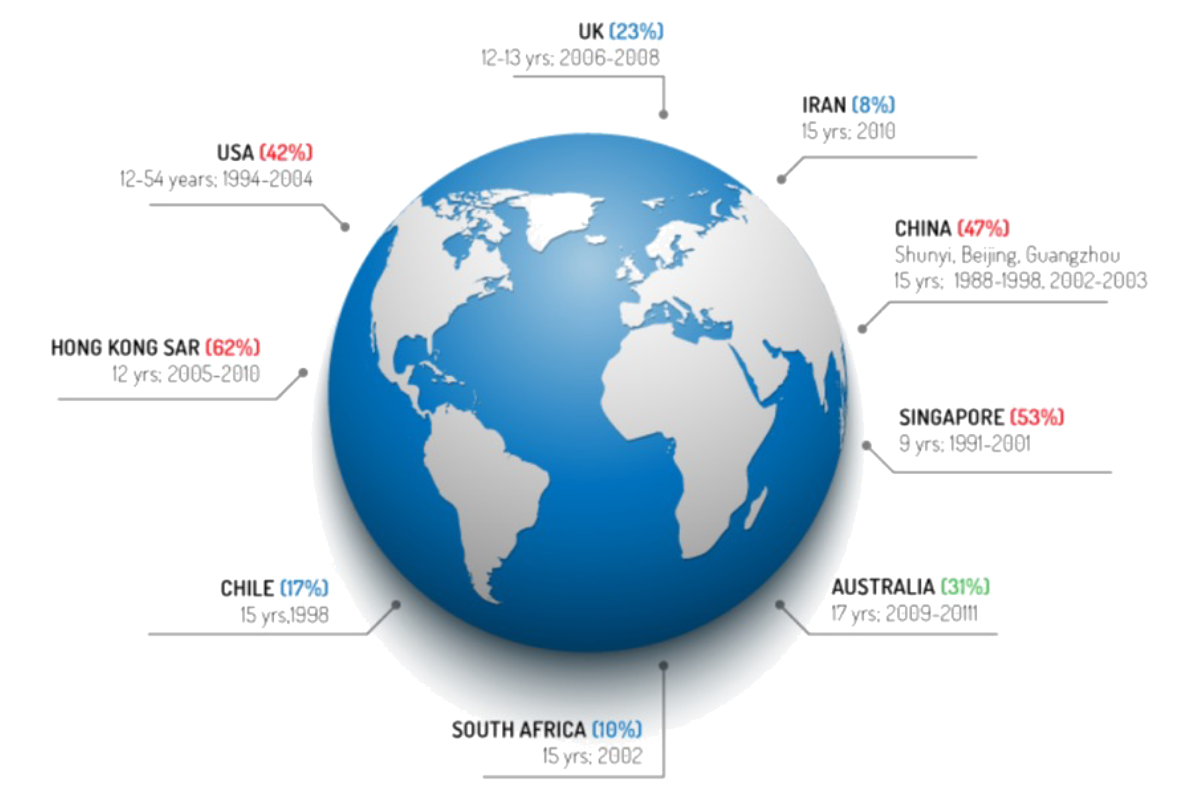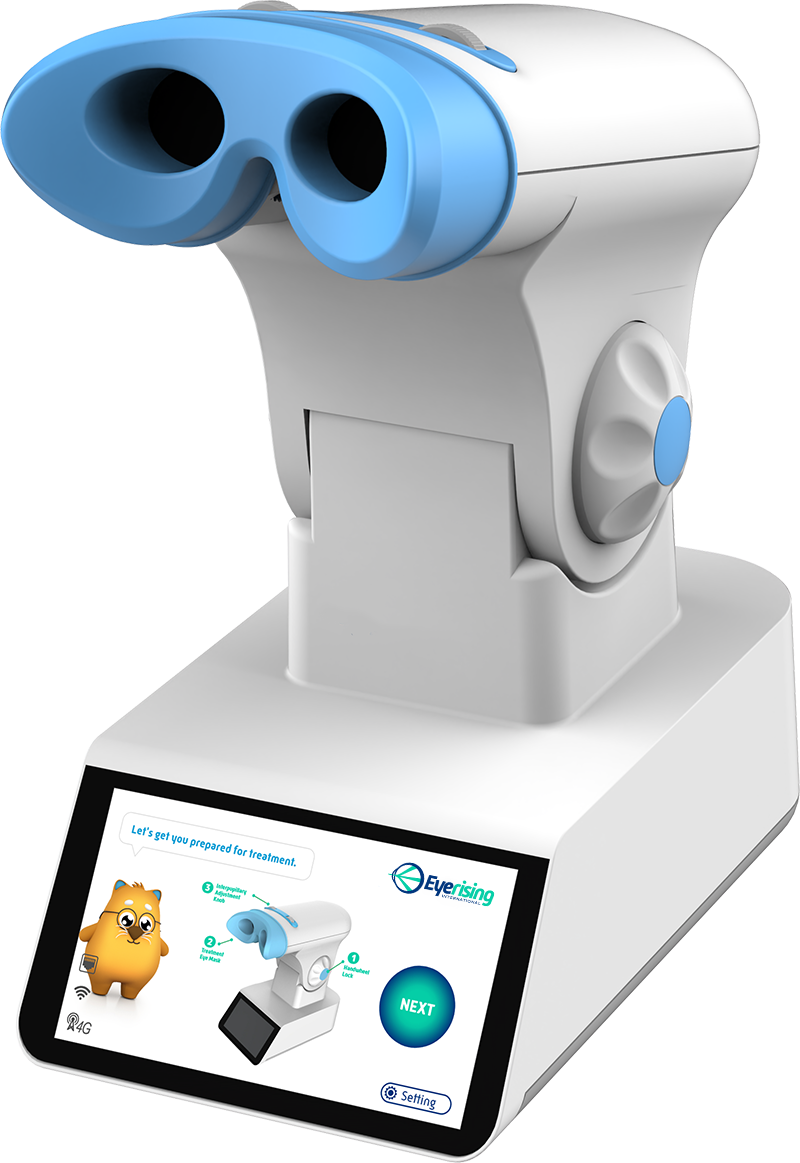Myopia is a serious and growing problem
By 2050, an estimated 1 in 2 people (5 billion) will have myopia1
Almost 20% of them (1 billion) will have high myopia1
Myopia will be the world’s leading cause of blindness1
In 2015 world productivity loss due to uncorrected myopic was US$244 Billion2
The most common ocular disorder in the world
Our eyesight is vital to learning, negotiating and leading productive lives. As humanity spends more time indoors, myopia (short-sightedness) is now the most common ocular disorder on the planet and is escalating rapidly.
Myopia gets progressively worse as life goes on
Myopia is a condition where people can see close objects clearly, but farther away, they appear blurred. It worsens over time, and severe myopia is associated with significantly increased risks for retinal degeneration and detachment, open-angle glaucoma and cataracts, even in childhood.
Global impact on humanity
By 2050, the predicted explosion of this degenerative condition will affect 1 in 2 people, or 5 billion globally. Almost 1 billion will have high myopia, becoming the world’s leading cause of permanent blindness¹. The burden on our health services and social impact on the next generation will be immense.
Enormous social and economic implications
Myopia has a major social impact in many East Asian countries, affecting 80% to 90% of high school graduates. Of these individuals, 10% to 20% have sight-threatening pathologic myopia.3,4
This not only affects quality of life regarding patients’ physical, emotional and social functioning5. It will also have a significant economic impact. Historical studies providing an overview of the problem and efforts to address it estimated the loss in world productivity caused by uncorrected myopic refractive error in 2015 to be US$244 billion and the cost of addressing this problem to be US$28 billion6. Imagine what this could look like in 2050.
Myopia Prevalence in Children

Infographic Source: International Myopia Institute, myopiainstitute.org/myopia/

There is no perfect treatment for childhood myopia
Childhood myopia progresses over time. Specialised contact lenses, eye drops and defocus glasses can slow progression. However, they can be daunting and difficult for parents and young children to live with, leading to fears, tears, or complications that can all negatively affect patient compliance and ultimately, treatment efficacy.
A powerful new addition to existing therapies
Eyerising International’s commitment to leading the fight against childhood myopia led to the development of our patented Eyerising Myopia Management Device Repeated Low-Level Red-Light (RLRL) therapy, a highly effective and child-friendly way to treat myopia.
The device is clinically proven to slow the progression of child myopia by up to 87.7%7. It is designed to be used at home with 3 minutes of treatment, twice a day, 5 days per week and a minimum of 4 hours between sessions. All without pain, complications or known significant side effects.

References
- https://pubmed.ncbi.nlm.nih.gov/26875007/
- https://retinatoday.com/articles/2019-sept/myopia-a-global-epidemic
- Ruiz-Pomeda A, Pérez-Sánchez B, Valls I, et al. MiSight Assessment Study Spain (MASS). A 2-year randomized clinical trial. Graefes Arch Clin Exp Ophthalmol. 2018;256(5):1011-1021.
- Eyenovia enrolls first patient in phase III CHAPERONE Study for progressive myopia [news release]. New York: Globe Newswire; June 4, 2019. https://www.globenewswire.com/news-release/2019/06/04/1863931/0/en/Eyenovia-Enrolls-First-Patient-in-Phase-III-CHAPERONE-Study-for-Progressive-Myopia.html. Accessed June 25, 2019.
- Lam CSY, Tang WC, Tse DY, et al. Defocus incorporated multiple segments (DIMS) spectacle lenses slow myopia progression: a 2-year randomised clinical trial [published online ahead of print May 29, 2019]. Br J Ophthalmol. doi: 10.1136/bjophthalmol-2018-313739.
- Singapore National Eye Centre, Singapore Eye Research Institute, and Johnson & Johnson Vision set sights on halting global myopia epidemic [news release]. Singapore: PRNewswire; November 12, 2018. https://www.prnewswire.com/news-releases/singapore-national-eye-centre-singapore-eye-research-institute-and-johnson–johnson-vision-set-sights-on-halting-global-myopia-epidemic-300747895.html. Accessed June 25, 2019.
- Jiang, Yu, et al. “Effect of repeated low-level red-light therapy for myopia control in children: a multicenter randomized controlled trial.” Ophthalmology 129.5 (2022): 509-519.




